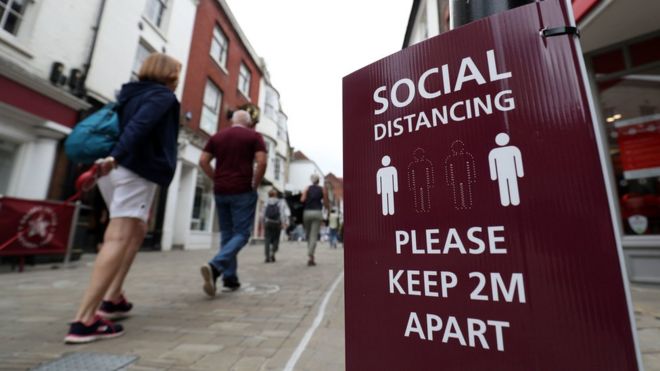
Extra Covid-19 rules were introduced in northern England in July / PA MEDIA
Tightened lockdown rules to stop the spread of Covid-19 were imposed in July…
Tightened restrictions to stop the spread of Covid-19 are to be eased in parts of north-west England, allowing more than a million people to mix in different households.
From Wednesday rules will be relaxed in Bolton, Stockport, Trafford, Burnley, Hyndburn and parts of Bradford, Calderdale and Kirklees.
Measures were imposed in those areas at the end of July amid a rise in cases.
Current restrictions in Leicester remain until a review by 11 September.
Health and Social Care Secretary Matt Hancock said: “We brought in measures to protect people in these parts of northern England.
“We’re seeing the positive results of our local approach, and are able to bring in increasingly targeted measures.”
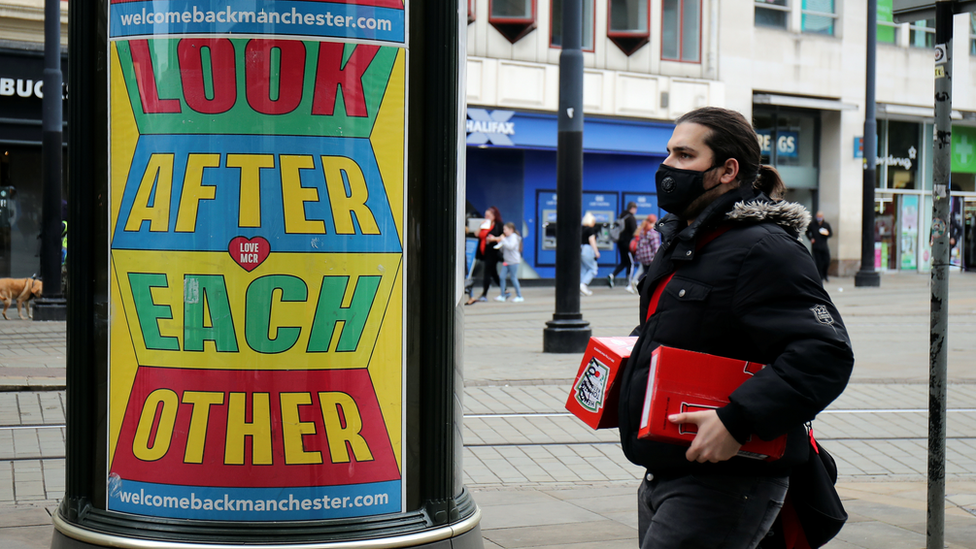 Image copyrightREUTERS
Image copyrightREUTERSBusinesses which opened elsewhere in England on 15 August, including bowling alleys and indoor play areas, will also be able to reopen in the areas where rules are being relaxed.
Coronavirus cases per 100,000 population in Burnley halved during the week ending 20 August from 52 to 24.6, while cases in Bolton and Stockport fell from 25.6 to 18.9, and 23 to 15.1 respectively, and Trafford cases dropped from 27.1 to 17.8, the government said.
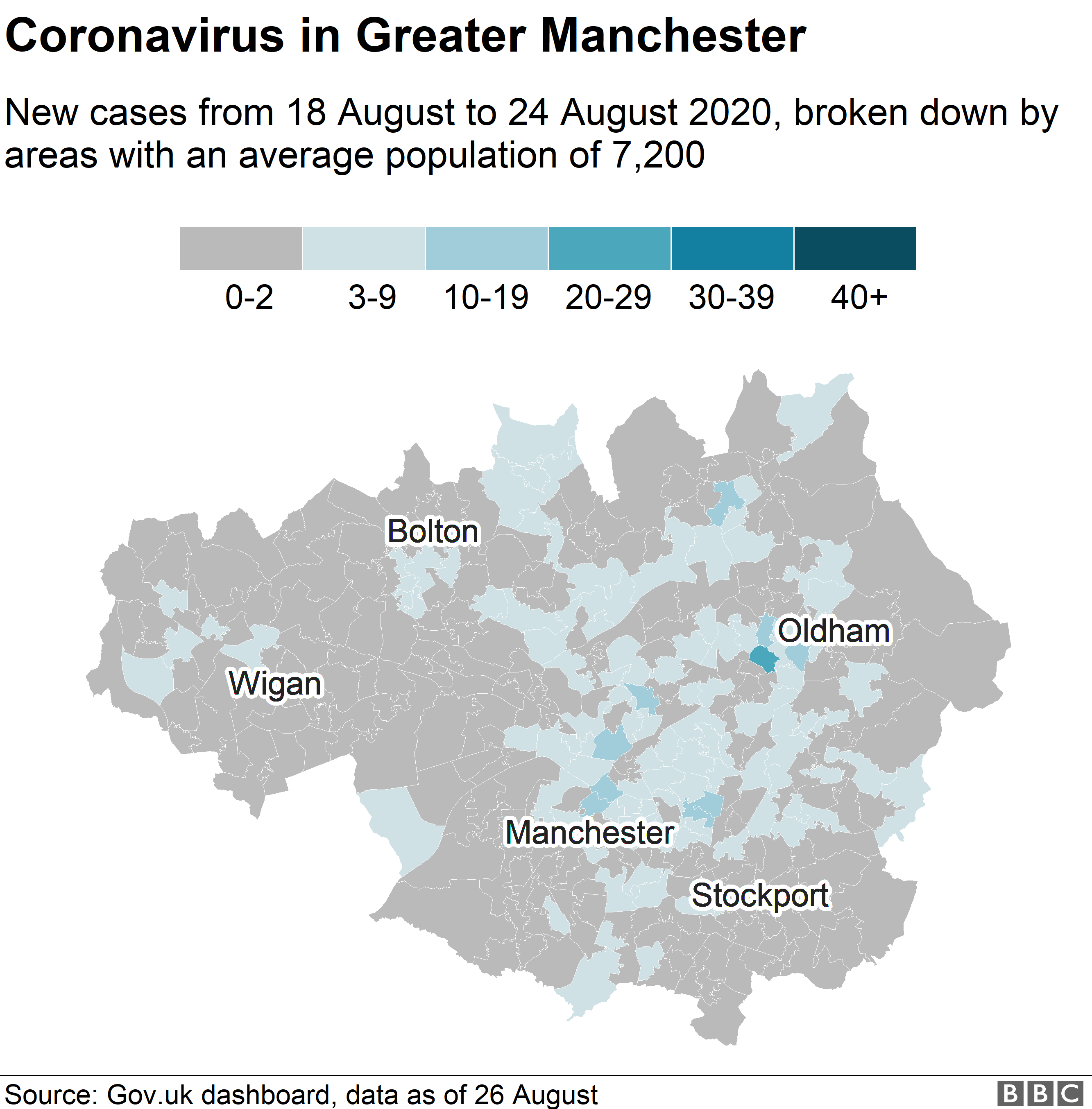
However, Andrew Western, Labour leader of Trafford Council, told the Local Democracy Reporting Service he believed it was “premature” to lift restrictions as the last few days have shown a “slight increase” in infection rates.
“It was our view – in line with the expert advice from the council’s director of public health – that we should see evidence of a sustained reduction in Trafford’s infection numbers before calling for the lifting of local restrictions,” Mr Western said.
“This action by government makes a mockery of the claims of locally led decision making and once again shows that local government is being ignored in spite of being on the front line of this crisis.”

BBC Health correspondent Nick Triggle
The easing of restrictions is good news for people in these areas – and good news for people everywhere in the UK.
It suggests the approach being taken is effective at containing local outbreaks.
The testing capacity the UK has means it is able to identify where infection rates start rising and to do this at an early stage.
But the encouraging signs are to do with much more than just this. It is a testament to the way people react – working together locally to ensure the virus does not spread.
There are many more challenges to come. Infection rates have crept up a little in recent weeks – and that is likely to continue into the autumn and winter.
But the fact that the areas with higher infection rates have been able to reverse the trend is a step in the right direction.

Conservative MP Sir Graham Brady, who represents Altrincham and Sale West and is chairman of the party’s 1922 committee, was in favour of lifting the measures.
The government has based its decision partly on the rate of cases up to 20 August which showed cases in Trafford had fallen.
However, latest data released on Friday showed Trafford recorded 25.3 cases per 100,000 people in the week to 25 August.
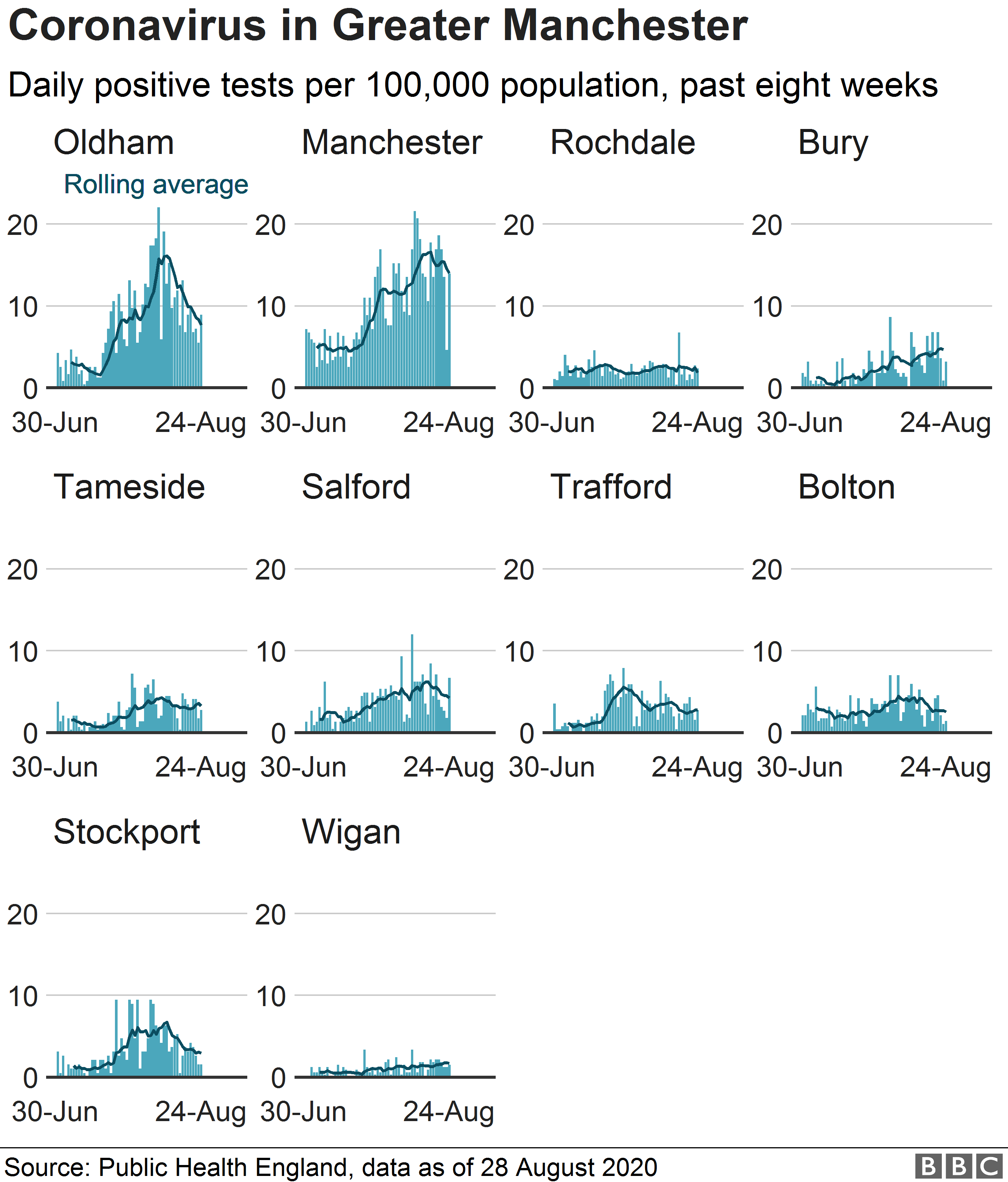

Restrictions will continue in the following areas:
North-west England
- A ban on two households mixing indoors will continue in Preston, the city of Manchester, Oldham, Salford, Rochdale, Bury, and Tameside
- In Oldham, Pendle and Blackburn, residents are also advised to avoid mixing with anyone from another household inside or outside.
- Some businesses and organisations will remain shut in Blackburn and Darwen.
Leicester
- On top of the indoor gatherings restrictions, some leisure businesses will remain shut
- The next review of these measures will take place by 11 September
West Yorkshire
- The ban on indoor household gatherings remains in urban areas of Bradford, Dewsbury, Batley and parts of Calderdale
- Some businesses and organisations remain shut in urban areas of Bradford
Shielding advice for clinical extremely vulnerable individuals remains across all of Blackburn with Darwen, and Leicester.

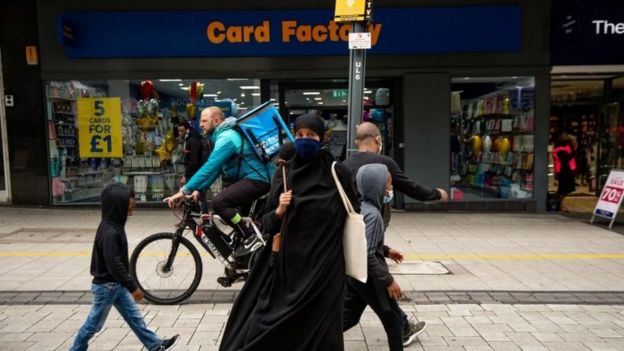 Image copyrightPA MEDIA
Image copyrightPA MEDIATracy Brabin, Labour MP for Batley and Spen, welcomed the lifting of restrictions in Kirklees but said she was disappointed Batley was not included, adding residents there were “understandably concerned”.
This was echoed by councillor Shabir Pandor, leader of Kirklees Council, who said he was going to “press the government to tell us how we can get Dewsbury and Batley lifted from these restrictions”, adding he was “going to fight for these communities”.
Lancashire’s director of public health, Dr Sakthi Karunanithi, warned against “complacency”.
“In both Burnley and Hyndburn infection rates are significantly above the national average with an increasing rate in Hyndburn,” he said.
“There is a high volume of social, educational and commuting travel between these areas and Lancashire’s hotspots.”
Birmingham, which became an “area of enhanced support” last week, has avoided a local lockdown after what West Midlands mayor Andy Street said was a “remarkable” turnaround.
Ramping up testing and a legally-enforced crackdown on businesses flouting Covid-19 measures has helped it avoid local restrictions.
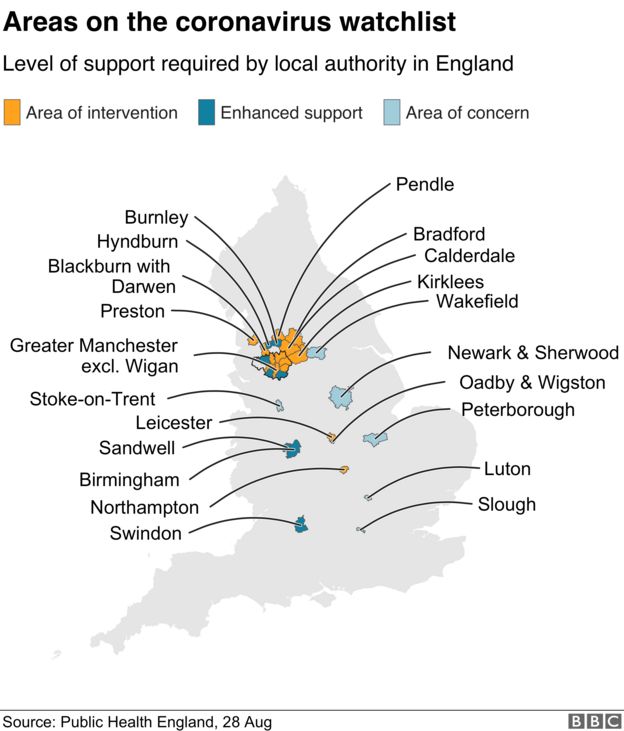
Sandwell in the West Midlands and Swindon have moved up the Public Health England “watchlist” to become “areas of enhanced support”, meaning they will get additional resources to tackle a rise in cases.
Luton has moved down from “enhanced support” to an “area of concern” following a drop in cases.
Stoke-on-Trent is being added to the list for the first time as an “area of concern”, meaning there may be extra testing of high-risk areas or groups, such as care homes, and more communication about social distancing.
Trafford, Bolton, Stockport, Burnley, Hyndburn, Burnley, parts of Bradford, parts of Kirklees, and parts of Calderdale are moved down the list from “intervention” – the highest category on the watchlist – to “enhanced support”.
https://www.bbc.com/news/uk-england-53930746

